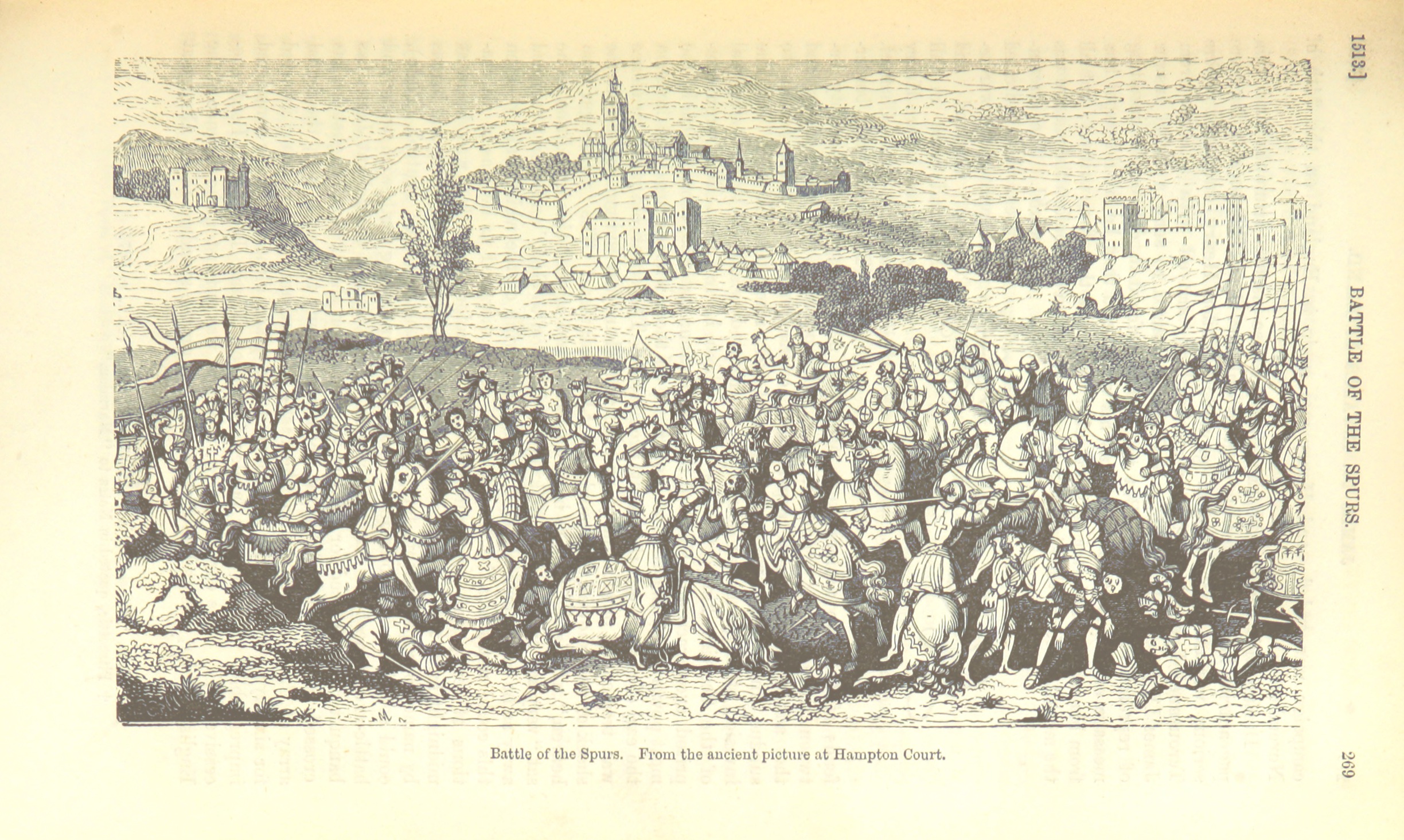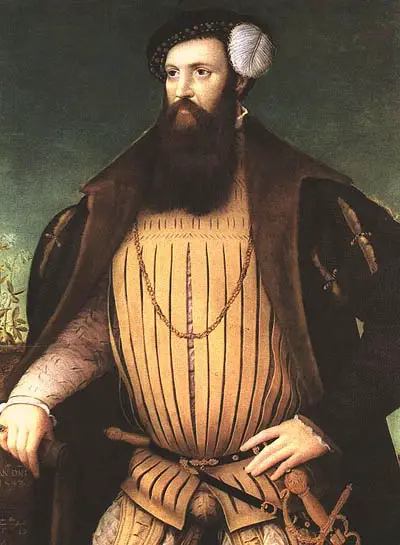On the 10th August 1512, the Battle of Saint-Mathieu, a battle in the War of the League of Cambrai, took place between the English and Franco-Breton fleets off the coast of Brest. England at this time was allied with Spain and the Holy Roman Empire against France.
As the Mary Rose Museum points out, it was the Mary Rose's first battle and she was chosen as the English fleet's flagship by Sir Edward Howard, Admiral of the English fleet. Howard, who was moored with the English fleet at Portsmouth, had heard that the French fleet had gathered at Brest and so set off to meet them. The two fleets met in Berthaume Bay, near Brest, om 10th August and the battle began.
France had twenty-one ships, including the flagship the Grand Louise and the Marie La Cordelière, while England had twenty-five ships, including Henry VIII's largest ship, the Regent, and the new and smaller Mary Rose. The Mary Rose museum website states:
"It was the Mary Rose that, according to records, drew first blood, when she shot off the main mast of the French flagship Grand Louise, commanded by Admiral René de Clermont. Although the Grand Louise was able to escape, with the loss of 300 men, this marked the first time in the history of Naval warfare that ships with lidded gunports had engaged one another."
The battle lasted hours but the result was an English victory. Henry VIII's largest ship, the Regent, sank as did the French ship the Marie La Cordelière. The two ships had been firing at each other at close quarters when a fire broke out on board La Cordelière. It soon reached the ship's powder magazines and when that happened both the Regent and La Cordelière were blown up. Both captains were killed, along with around 1,500 men. Those killed included Sir Thomas Knyvet and Sir John Carew who had been given joint command of the Regent. According to one report, Knyvet died before the ship sank, being killed by gunfire. In a letter to Richard Fox, Bishop of Winchester, on 26th August 1512, Cardinal Wolsey wrote of the battle:
"Gives an account of a severe sea fight near Brest on Tuesday fortnight, where the Regent captured the great carrick of Brest; but both, fouling, were burnt, and most part of the crew in them. Sir Thos. Knyvet and Sir John Carewe slain. Begs he will keep the news secret. Farnham, 26 Aug. Signed: "Thomas Wulcy."
P.S.—The French fleet has fled to Brest. Sir Edward [Howard] has vowed "that he will never see the King in the face till he hath revenged the death of the noble and valiant knight Sir Thomas Knyvet.""
Further Reading
- "A Day in History, Tuesday 10th August 1512", Early Modern Forum 1450-1850, University of Warwick. http://www2.warwick.ac.uk/fac/arts/emforum/projects/adayinhistory/10august1512/
- Letters and Papers, Foreign and Domestic, Henry VIII, Volume 1: 1356.
- The first battle of the Mary Rose, Mary Rose Museum - http://www.maryrose.org/the-first-battle-of-the-mary-rose/




Leave a Reply